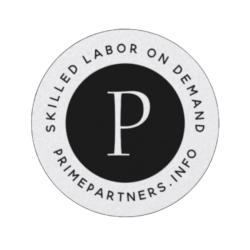Solar System Designer Interview Questions and Answers
Interview Preparation Guide for Solar System Designer Position
Overview of Required and Recommended Certifications, Educational Background, and Industry Qualifications
-
Educational Background:
- Required:
- Bachelor’s degree in Electrical Engineering, Mechanical Engineering, Renewable Energy, or a related field.
- Recommended:
- Master’s degree in Renewable Energy Systems, Sustainable Engineering, or similar.
- Required:
-
Certifications:
- Required:
- NABCEP Solar PV Installer Certification, which demonstrates competency in solar PV system installation.
- Recommended:
- Certified Energy Manager (CEM)
- Solar Energy International (SEI) Solar Professionals Certificate
- Leadership in Energy and Environmental Design (LEED) Certification
- Required:
-
Industry Qualifications:
- Experience with photovoltaic (PV) system design software such as PVsyst, AutoCAD, SolarDesignTool.
- Understanding of electrical codes and standards (e.g., NEC, IEC).
- Familiarity with energy storage systems and hybrid solar configurations.
- Strong project management skills, possibly demonstrated by a PMP certification.
Interview Questions and Answers
Technical Questions
-
What factors do you consider when designing a solar power system?
-
Answer:
- Site Assessment: Evaluate the location’s solar potential, considering factors like shading, roof orientation, and tilt.
- Energy Needs Analysis: Determine the client’s energy consumption patterns to size the system appropriately.
- Component Selection: Choose suitable PV modules, inverters, and mounting systems.
- System Sizing: Use tools like PVsyst to simulate system performance and ensure it meets energy needs.
- Regulatory Compliance: Ensure design adheres to local building codes and electrical standards (e.g., NEC).
-
Examples and Context:
- Residential Installation: For a suburban home, consider shading from trees and roof space limitations. Focus on maximizing energy production within constraints.
- Commercial Project: Large office buildings may require a detailed load analysis to integrate solar with existing grid infrastructure.
-
Pitfalls to Avoid:
- Neglecting shading analysis, which can significantly reduce system efficiency.
- Over-sizing the system, leading to unnecessary costs.
-
Follow-up Points:
- Discuss experiences with specific design software.
- Explain how you handle unexpected site challenges.
-
-
How do you ensure compliance with NEC standards in your designs?
-
Answer:
- Familiarization: Stay updated with the latest NEC standards revisions.
- Design Software: Use software that includes NEC compliance checks.
- Peer Review: Conduct design reviews with colleagues to catch potential compliance issues.
- Continuous Education: Attend workshops and seminars on NEC updates.
-
Examples and Context:
- Rooftop Installation: Ensuring proper grounding and bonding of components to prevent electrical hazards.
- Utility-Scale Project: Design must accommodate NEC requirements for large systems, including considerations for fire safety and access.
-
Best Practices:
- Regularly consult NEC handbooks during design.
- Engage with local inspectors early in the project to understand specific interpretations of the code.
-
Follow-up Points:
- Discuss how you handled a specific compliance issue in a past project.
- Explain your approach to staying current with regulatory changes.
-
Behavioral Questions
-
Describe a time when you had to work with a difficult team member. How did you handle it?
-
Answer:
- Scenario: During a solar farm project, a team engineer consistently missed deadlines, affecting project timelines.
- Approach: Initiated a one-on-one meeting to understand their challenges, provided support, and adjusted roles to better suit their strengths.
- Outcome: Improved team dynamics and project delivery time.
-
Alternative Considerations:
- Escalation: If the issue persists, consider involving management.
- Training: Offer additional training if skill gaps are identified.
-
What Not to Do:
- Avoid confrontation in team meetings; address issues privately.
- Don’t ignore the problem, hoping it will resolve itself.
-
Follow-up Points:
- Discuss how you build rapport with new team members.
- Explain your approach to conflict resolution in teams.
-
Situational Questions
-
How would you adapt a solar system design if the budget is cut by 20% mid-project?
-
Answer:
- Prioritization: Identify essential components and phases, such as high-efficiency panels or critical infrastructure.
- Cost-Reduction Strategy: Explore alternative components or suppliers without compromising quality.
- Design Optimization: Consider system downsizing or phased implementation to align with budget constraints.
-
Examples and Context:
- Residential Project: Opt for fewer panels with higher efficiency to maintain energy output.
- Commercial Installation: Delay non-essential features, like advanced monitoring systems, to later phases.
-
Best Practices:
- Maintain clear communication with stakeholders about changes and impacts.
- Reassess project ROI to ensure continued viability.
-
Pitfalls to Avoid:
- Sacrificing system quality for cost, which can lead to long-term issues.
- Failing to document changes and obtain stakeholder approval.
-
Follow-up Points:
- Discuss experiences with budget management in past projects.
- Explain how you ensure quality despite budget constraints.
-
Problem-Solving Questions
-
You encounter unexpected shading on a site previously assessed as optimal. How do you resolve this?
-
Answer:
- Reassessment: Conduct a detailed shading analysis using tools like Solar Pathfinder.
- Design Adjustment: Optimize panel placement or use microinverters to mitigate shading impact.
- Client Consultation: Discuss the impact with the client and explore solutions, such as trimming vegetation or relocating panels.
-
Examples and Context:
- Urban Environment: Tall buildings may create unexpected shading; consider panels on secondary structures or vertical installations.
- Rural Setting: Trees may grow and affect shading; plan for regular site maintenance.
-
Best Practices:
- Always conduct a thorough site assessment before design finalization.
- Incorporate flexible design options that allow future adjustments.
-
Pitfalls to Avoid:
- Ignoring minor shading, which can substantially affect energy yield.
- Failing to communicate potential issues and solutions to clients.
-
Follow-up Points:
- Explain your process for conducting site assessments.
- Discuss how you validate the accuracy of your shading analysis.
-
-
How would you handle a situation where a key component is unavailable due to supply chain issues?
-
Answer:
- Supplier Network: Leverage relationships with multiple suppliers to find alternatives.
- Alternative Solutions: Research compatible components that meet project specifications.
- Stakeholder Communication: Keep clients informed of potential delays and discuss alternative options.
-
Examples and Context:
- Inverter Shortage: Quickly source compatible inverters or consider alternative technologies like string inverters.
- Panel Availability: Opt for panels with similar specifications from different manufacturers.
-
Best Practices:
- Maintain a robust supply chain strategy, anticipating potential disruptions.
- Document all changes and ensure compliance with design requirements.
-
Pitfalls to Avoid:
- Proceeding with substandard components that compromise system performance.
- Underestimating the impact of supply chain delays on project timelines.
-
Follow-up Points:
- Discuss your experience managing supply chain challenges.
- Explain how you ensure quality and compliance when sourcing alternatives.
-
This guide provides a comprehensive overview of the skills, qualifications, and interview preparation required for a Solar System Designer position. By understanding these questions and scenarios, candidates can demonstrate their technical expertise, problem-solving abilities, and adaptability in the dynamic field of solar energy design.
More Solar Interview Guides
Explore more interview guides for Integrated Systems positions.
Battery Storage Technician Interview Help
This Battery Storage Technician Interview Help guide equips job seekers with essential strategies to excel in intervi...
Solar PV Electrician Interview Preparation
This guide prepares job seekers for Solar PV Electrician interviews by covering key topics such as solar energy funda...
Solar System Designer Interview Questions and Answers
This guide provides essential interview questions and answers for aspiring Solar System Designers. Job seekers will l...
Solar Energy Technician Interview Help
This guide prepares job seekers for a Solar Energy Technician interview by offering insights into key industry concep...
Solar Panel Installer Interview Questions and Answers
This guide provides job seekers with essential Solar Panel Installer interview questions and answers, equipping them ...
Recent Articles
Check out more articles from Best Electrician Jobs about getting hired inthe electrical industry.
Best Job Board for Electricians
Discover the best job board for electricians! Boost your career with insights on salaries, training, and growth!
Improve Your Electrician Job Postings for More Applicants
Discover how to improve your electrician job postings for more applicants! Boost your career with insights on salarie...
What is the Highest Paying Electrician Role?
Discover the highest paying electrician roles and how to prepare for them. Learn about the skills and certifications ...
Industrial Electrician Careers in California
From manufacturing plants to data centers, industrial electricians play a vital role in California's economy. Discove...
Security Technician Interview Questions and Answers
Security technicians are essential in protecting our modern world. Learn what to expect in your Security Technician i...
Featured Jobs
-

- Company
- Prime Partners
- Title and Location
- Cable Technician
- Wyoming, MI
- Employment Type
- FULL_TIME
- Salary
- $25.16-$32.59/HOUR
- Team and Date
- Commercial
- Posted: 04/17/2025
-

- Company
- Prime Partners
- Title and Location
- Apprentice Electrician
- San Diego, CA
- Employment Type
- FULL_TIME
- Salary
- $24-$37/HOUR
- Team and Date
- Commercial
- Posted: 04/17/2025
-

- Company
- Prime Partners
- Title and Location
- Security Alarm Installer
- Mesa, AZ
- Employment Type
- FULL_TIME
- Salary
- $25.81-$30.68/HOUR
- Team and Date
- Commercial
- Posted: 04/17/2025
-
- Company
- Jackson Healthcare
- Title and Location
- Journeyman Electrician
- Alpharetta, GA
- Employment Type
- FULL_TIME
- Salary
- $30.6-$35.86/HOUR
- Team and Date
- Commercial
- Posted: 04/17/2025
-

- Company
- Prime Partners
- Title and Location
- Journeyman Electrician
- Gilbert, AZ
- Employment Type
- FULL_TIME
- Salary
- $40-$55/HOUR
- Team and Date
- Data Center
- Posted: 04/17/2025
-

- Company
- Prime Partners
- Title and Location
- Voice & Data Technician
- Glendale, AZ
- Employment Type
- FULL_TIME
- Salary
- $23-$35/HOUR
- Team and Date
- Commercial
- Posted: 04/17/2025
Best Electrician Jobs
Ready to get started?
Stop worring about manpower. And get back to what you do best.
Best Electrician Jobs is for Everyone
At Best Electrician Jobs, we are dedicated to fostering an inclusive environment that values diverse perspectives, ideas, and backgrounds. We strive to ensure equal employment opportunities for all applicants and employees. Our commitment is to prevent discrimination based on any protected characteristic, including race, color, ancestry, national origin, religion, creed, age, disability (mental and physical), sex, gender, sexual orientation, gender identity, gender expression, medical condition, genetic information, family care or medical leave status, marital status, domestic partner status, and military and veteran status.
We uphold all characteristics protected by US federal, state, or local laws, as well as the laws of the country or jurisdiction where you work.
 Best Electrician Jobs
Best Electrician Jobs